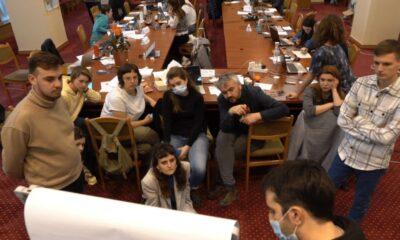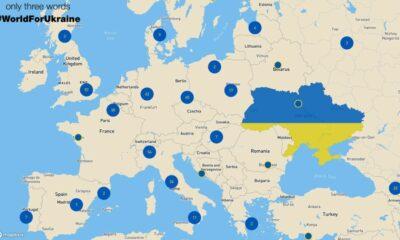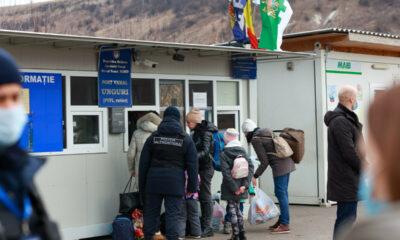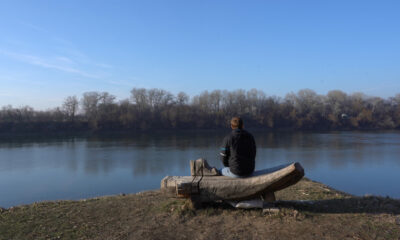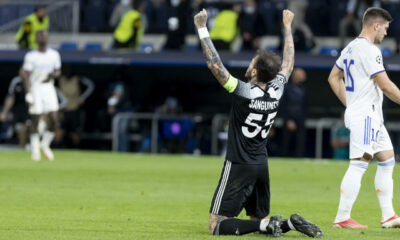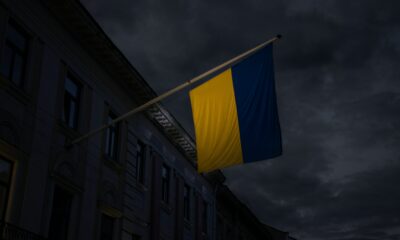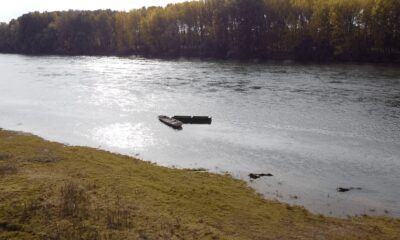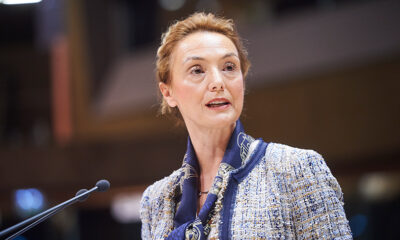Featured
Is the newly elected Ukrainian president a model for any post-Soviet state? The impact of the Zelenskiy’s presidency on Moldova
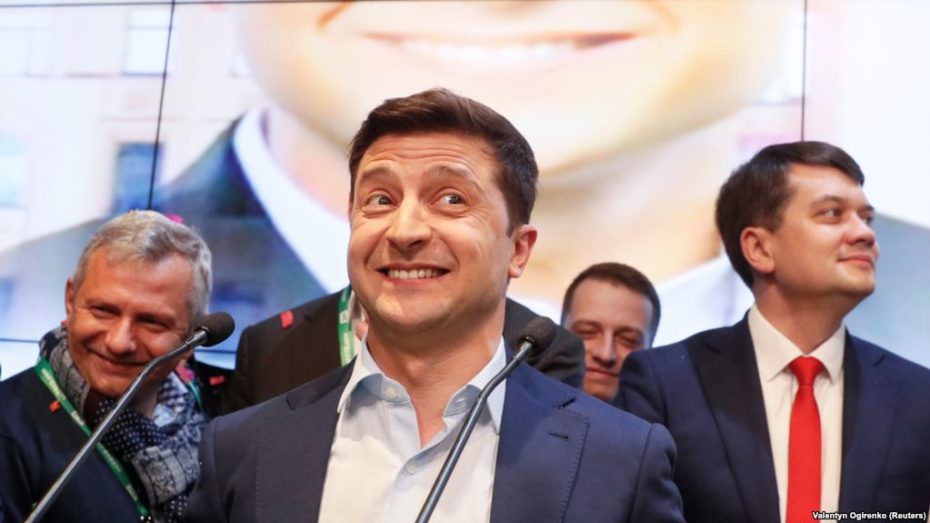
Volodymyr Zelenskiy, the newly elected President of Ukraine, who became a phenomenon overnight declared during the first minutes of his victory: “I am still not officially a president, and I can say as a citizen of Ukraine to all the post-Soviet states: look at us — everything is possible!”
Is that really so? Are the Republic of Moldova and Ukraine comparable when it comes to the political or economic situations, external relations and the overall character of the society? And what is even more important: will the changes in Ukraine impel any transformations in the Republic of Moldova as well?
The parallels between Ukraine and Moldova
First, Ukraine and Moldova have two different forms of government. Ukraine is a unitary semi-presidential constitutional republic, whereas Moldova is a unitary parliamentary constitutional republic. Sounds similar but, in fact, that means that in Ukraine the president, as a head of state, has more political power, being more than a ceremonial, non-executive figure (as it is in the case of the Republic of Moldova). However, there is an important similarity regarding the election system used to vote the Parliament – both countries use the mixed election system.
Both post-Soviet countries suffered plenty of transformations in terms of changing governments since their independence declaration. Reformers, communists, nationalists, centrists, extremists, pro-Russians, pro-Europeans, all of them governed at certain point one country or another. Both Moldovans and Ukrainians fought for a better quality of life through mass protests. The peak for Moldovans was the mass protests from April 2009, when the victory of Communists at the parliamentary elections was publicly contested. In Ukraine, it was the Euromaidan from February 2014 when the pro-Russian President Yanukovych was removed from office after the Ukrainian ‘course’ was suddenly switched from signing the EU association agreement to tightening relations with Russia. The difference – Ukraine had a real revolution, Moldova didn’t.
Both Ukraine and Moldova have territories that were occupied. Ukraine has a territorial dispute with Russia regarding Crimea and Donbass, whereas Moldova has two self-proclaimed and unrecognised states that are, in fact, separatist regions – Transnistria and Gagauzia. The difference in this case is that Ukraine doesn’t seem to give up in trying to reclaim its territories. The Moldovan governments of all times didn’t seem to really care about the Russian tanks set in Transnistria for so-called peace-keeping reasons, leaving the situation up in the air for more than 20 years.
There is one more similarity between these two countries – both seem to be torn up between the wish to join the EU one day and the impossibility to fully detach themselves from the Russian interests. Basically, that is one of the most important sources of social disputes, beside the language and ethnic minorities problems. Moreover, both countries have ‘enthroned’ oligarchs to control the things and both have a permanently decreasing population that still keeps the post-Soviet reminisces in their behaviour and way of thinking.
As it seems, Moldova and Ukraine have a similar background. But will they have a similar future?
The Ukrainian model in Moldova
Even though so many things sound familiar both for Ukrainians and for Moldovans, the latter ones don’t really have any chance to repeat the same story, as the Moldovan cinematography is not as developed as the Ukrainian one. Taking it seriously, Moldovan people proved to be more sceptical and conservative when they had the chance to choose between a reformer woman and an experienced but traditionalist man running for President of Moldova in 2016. Maybe that would change in the future. Maybe.
For now, it is more important to observe the possible repercussions of the Volodymyr Zelenskiy’s presidency on the existing situation in the Republic of Moldova.
Zelenskiy is, at the moment, “a blank piece of paper”, as The Guardian wrote. People have a lot of expectations from him and as he didn’t discuss any political or social problems during the pre-elections period, the expectations are really differing. Nobody knows yet whether he will negotiate with Kremlin. Nobody knows yet whether he has ties with the oligarch Ihor Kolomoiski. However, as the political pundit Dionis Cenușă stated in an interview for RFE/RL: “Until now, there has been no one to come from outside the system and to propose an agenda in which to believe.”
Cenușă also stated that if Zelenskiy eventually is able to move away from the oligarchic circles, that would be relevant to the political systems and the oligarchs from Moldova and Georgia. It is widely known that the business and political interests of Vladimir Plahotniuc (Moldova), Bidzina Ivanishvili (Georgia) and Petro Poroshenko (Ukraine) coincided in the past.
Moreover, Ukraine as an active player in the settlement of the Transnistrian conflict, being part of the 5 + 2 negotiation format. It would have a say in case Zelenskiy starts the informational war against Russia, as he previously promised during his electoral campaign.
One more thing that could change is the bilateral relations between the Ukrainian and the Moldovan Presidents. The discussions could be relaunched after 5 years of ‘cold’ relations between the Moldovan President Igor Dodon and the Ukrainian President Petro Poroshenko. It happened after a precipitate statement of Dodon in which he seemed to put the Kremlin right in the Crimea problem. Since that moment, Poroshenko refused any official meeting with Igor Dodon.
Nonetheless, things will be certainly clearer when Zelenskiy will take over after his inauguration in June 2019 and after the parliamentary elections in October 2019 will decide whether the Ukrainian president has a majority to support him.
Photo: Reuters
Society
“They are not needy, but they need help”. How Moldovan volunteers try to create a safe environment for the Ukrainian refugees
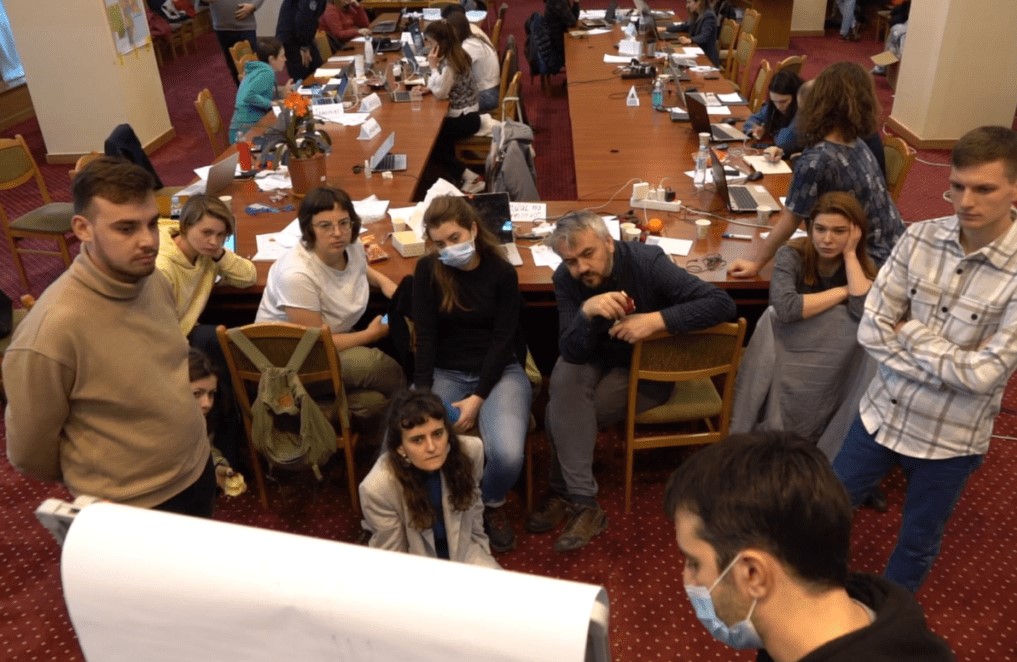
At the Government’s ground floor, the phones ring constantly, the laptop screens never reach standby. In one corner of the room there is a logistics planning meeting, someone has a call on Zoom with partners and donors, someone else finally managed to take a cookie and make some coffee. Everyone is exhausted and have sleepy red eyes, but the volunteers still have a lot of energy and dedication to help in creating a safe place for the Ukrainian refugees.
“It’s like a continuous bustle just so you won’t read the news. You get home sometimes and you don’t have time for news, and that somehow helps. It’s a kind of solidarity and mutual support,” says Vlada Ciobanu, volunteer responsible for communication and fundraising.
The volunteers group was formed from the very first day of war. A Facebook page was created, where all types of messages immediately started to flow: “I offer accommodation”, “I want to help”, “I want to get involved”, “Where can I bring the products?”, “I have a car and I can go to the customs”. Soon, the authorities also started asking for volunteers’ support. Now they all work together, coordinate activities and try to find solutions to the most difficult problems.
Is accommodation needed for 10, 200 or 800 people? Do you need transportation to the customs? Does anyone want to deliver 3 tons of apples and does not know where? Do you need medicine or mobile toilets? All these questions require prompt answers and actions. Blankets, sheets, diapers, hygiene products, food, clothes – people bring everything, and someone needs to quickly find ways of delivering them to those who need them.
Sometimes this collaboration is difficult, involves a lot of bureaucracy, and it can be difficult to get answers on time. “Republic of Moldova has never faced such a large influx of refugees and, probably because nobody thought this could happen, a mechanism of this kind of crisis has not been developed. Due to the absence of such a mechanism that the state should have created, we, the volunteers, intervened and tried to help in a practical way for the spontaneous and on the sport solutions of the problems,” mentions Ecaterina Luțișina, volunteer responsible for the refugees’ accommodation.
Ana Maria Popa, one of the founders of the group “Help Ukrainians in Moldova/SOS Українці Молдовa” says that the toughest thing is to find time and have a clear mind in managing different procedures, although things still happen somehow naturally. Everyone is ready to intervene and help, to take on more responsibilities and to act immediately when needed. The biggest challenges arise when it is necessary to accommodate large families, people with special needs, for which alternative solutions must be identified.
Goods and donations
The volunteers try to cope with the high flow of requests for both accommodation and products of all kinds. “It came to me as a shock and a panic when I found out that both mothers who are now in Ukraine, as well as those who found refuge in our country are losing their milk because of stress. We are trying to fill an enormous need for milk powder, for which the demand is high and the stocks are decreasing”, says Steliana, the volunteer responsible for the distribution of goods from the donation centers.
Several centers have been set up to collect donations in all regions of Chisinau, and volunteers are redirecting the goods to where the refugees are. A system for processing and monitoring donations has already been established, while the volunteer drivers take over the order only according to a unique code.
Volunteers from the collection centers also do the inventory – the donated goods and the distributed goods. The rest is transported to Vatra deposit, from where it is distributed to the placement centers where more than 50 refugees are housed.
When they want to donate goods, but they don’t know what would be needed, people are urged to put themselves in the position of refugees and ask themselves what would they need most if they wake up overnight and have to hurriedly pack their bags and run away. Steliana wants to emphasise that “these people are not needy, but these people need help. They did not choose to end up in this situation.”
Furthermore, the volunteer Cristina Sîrbu seeks to identify producers and negotiate prices for products needed by refugees, thus mediating the procurement process for NGOs with which she collaborates, such as Caritas, World Children’s Fund, Polish Solidarity Fund, Lifting hands, Peace Corps and others.
One of the challenges she is facing now is the identifying a mattress manufacturer in the West, because the Moldovan mattress manufacturer that has been helping so far no longer has polyurethane, a raw material usually imported from Russia and Ukraine.
Cristina also needs to find solutions for the needs of the volunteer groups – phones, laptops, gsm connection and internet for a good carrying out of activities.
Hate messages
The most difficult thing for the communication team is to manage the hate messages on the social networks, which started to appear more often. “Even if there is some sort of dissatisfaction from the Ukrainian refugees and those who offer help, we live now in a very diverse society, there are different kind of people, and we act very differently under stress,” said Vlada Ciobanu.
Translation by Cătălina Bîrsanu
Important
#WorldForUkraine – a map that shows the magnitude of the world’s actions against Russian aggression

The international community and volunteers from all over te world have launched #WorldForUkraine as a platform that shows the magnitude of the world’s actions against the Russian aggression. In a digital world – it is an interactive map of public support of Ukrainians under the hashtag #WorldForUkraine – rallies, flash mobs, protests around the world. In the physical dimension – it is your opportunity to take to the streets and declare: “No to Putin’s aggression, no to war.”
„Today, along with the political and military support, emotional connection with the civilized world and truthful information are extremely important for Ukraine. The power to do it is in your hands. Join the #WorldForUkraine project and contribute to the victorious battle against the bloodshed inflicted on Ukraine by the aggression of the Russian Federation”, says the „about the project” section of the platform.
Go to the streets — Tell people — Connect and Unite — Become POWERFUL
Volunteers have launched #WorldForUkraine as a platform that shows the magnitude of the world’s actions against Russian aggression. In digital world – it is an INTERACTIVE MAP of public support of Ukrainians worldforukraine.net under the hashtag #WorldForUkraine – rallies, flash mobs, protests around the world. In the physical dimension – it is your opportunity to take to the streets and declare: “No to Putin’s aggression, no to war.” There you may find information about past and future rallies in your city in support of Ukraine. This is a permanent platform for Ukrainian diaspora and people all over the world concerned about the situation in Ukraine.
So here’s a couple of things you could do yourself to help:
* if there is a political rally in your city, then participate in it and write about it on social media with geolocation and the hashtag #WorldForUkraine
* if there are no rallies nearby, organize one in support of Ukraine yourself, write about it on social media with geolocation adding the hashtag #WorldForUkraine
The map will add information about gathering by #WorldForUkraine AUTOMATICALLY
Your voice now stronger THAN ever
All rallies are already here: https://worldforukraine.net
Opinion
Russia And Ukraine At The Beginning of 2022
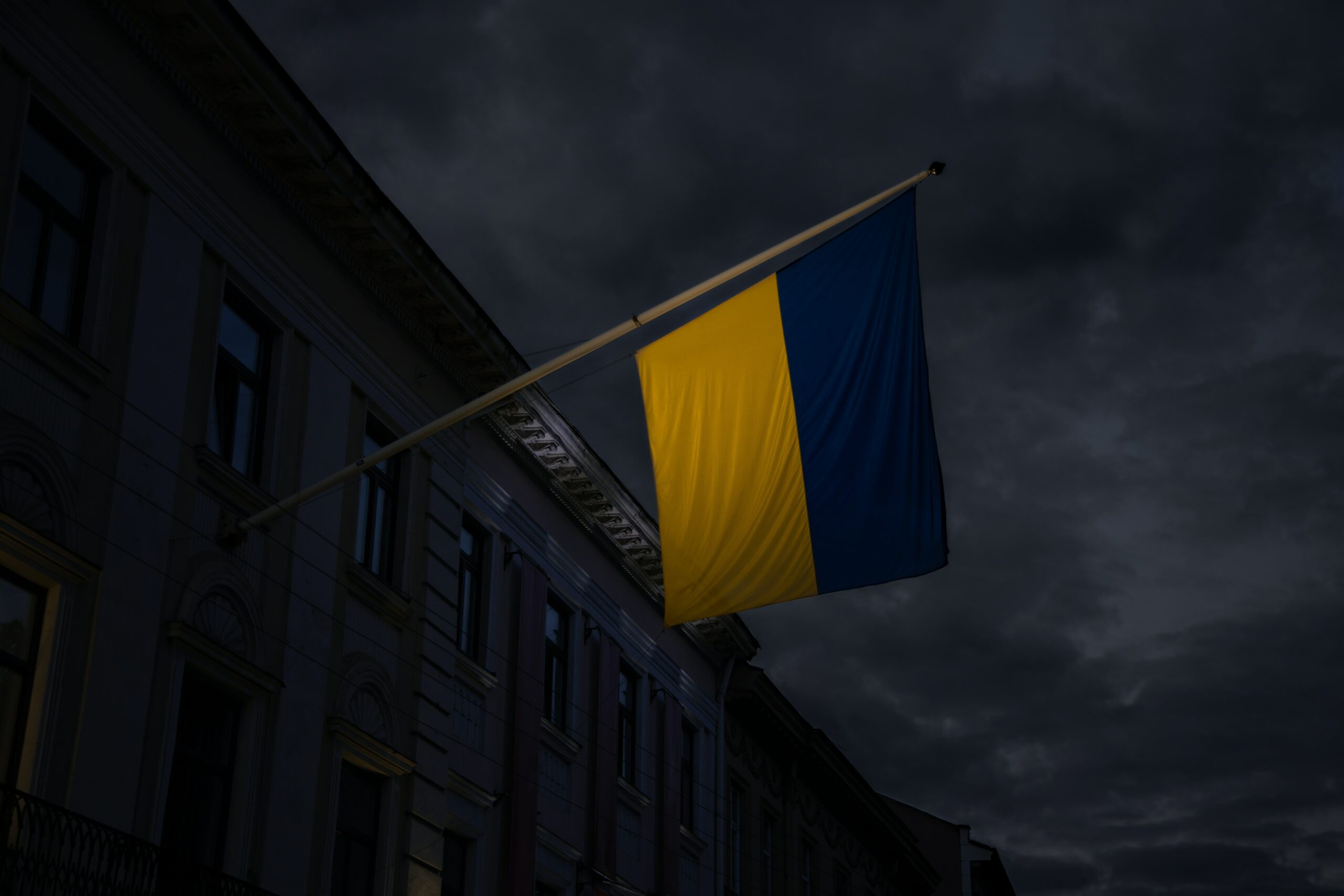
This opinion piece was written by Dr. Nicholas Dima. Dr. Dima was formerly a Professor of Geography and Geopolitics at Djibouti University, St. Mary’s University College and James Madison University. From 1975 to 1985 and from 1989 to 2001, Dr. Dima was a Writer and Field Reporter at Voice of America. The opinion does not necessarily represent the opinion of the editorial staff of Moldova.org.
***
The 21st Century Russian Federation is a rebirth of the 19-th Century Tsarist Empire; a huge territory inhabited by hundreds of ethnic groups held together by an authoritarian government. Having acquired a diversity of lands and peoples that would not freely want to be together, Moscow has to be on guard. It has to keep an eye on those who are inside the federation and to make sure that no outsiders threaten its territory. Otherwise, in a nutshell, Ukraine is Russia’s biggest dilemma and Russia is Ukraine’s biggest nightmare!
In 1991 Moscow agreed reluctantly to the dissolution of the former USSR. Ukraine became independent and consented to give up its nuclear arsenal inherited from the Soviet Union in exchange for territorial guaranties. Russia did not keep its engagement. It violated the Minsk protocol and in 2014, after a hybrid war, annexed Crimea. At the same time, pro-Russian forces took over two important eastern Ukrainian regions, Lugansk and Donetsk, where the population is ethnically mixed and somehow pro-Russian.
Since the annexation of Crimea, Moscow has strengthened its military presence in the peninsula and in the Black and Azov Seas. Furthermore, it built a strategic bridge that connects Crimea with the Russian mainland. Then, Russia began to reject NATO activities in East Europe and to denounce the presence of the US Navy in the Black Sea as provocations. In order to counter NATO, Russia also brought some of its warships from the Caspian Sea to the Black Sea through the Volga-Don Canal.
During recent years, Ukraine approached the United States and NATO and asked for assistance and, eventually, for membership in the EU and possibly NATO. For Moscow, however, Ukraine is an essential buffer zone against the West. With President Vladimir Putin lamenting the dismemberment of the USSR and embracing the traditional Russian expansionist mentality, the perspective of Ukraine’s NATO membership would be an existential threat.
The current situation at the Russo-Ukrainian border is tense and the stakes are high. Neither country is satisfied with the status quo, but the choices are very risky. The important Donbas region of East Ukraine, controlled by pro-Russian forces, is in a limbo. Ukrainian President Volodymyr Zelensky is losing support among the people and must defend his country’s integrity. Currently, Putin has the upper hand and military superiority on his side, but using brute force in the conflict could trigger further Western economic sanctions and even military hostility.
For now it seems that Moscow is mainly posturing, but the true Russian intentions are not clear. Thus, a miscalculation could trigger a catastrophe of international proportions. No one knows how the events will play out, but the danger is obvious. Moscow is playing with fire. Apparently, it does not want a full war, neither the current stalemate, nor a retreat. What does it want? It seems that Moscow knows what it wants, but not necessarily what it can!
Regionally, the situation between Europe and Russia is complex and internationally the world is confronted with threatening new realignments. With the help of Russia, Belarus has encouraged thousand of Middle East migrants to assail the Polish border and the European Union. Poland has mobilized its forces and NATO and EU are on alert. The three Baltic countries also feel threatened. And the recent Russo-Chinese economic cooperation and military rapprochement reinforce the international apprehension.
Since the dissolution of the USSR, Russia went through several uneasy stages. During the first years of transition toward a new political system Russia experienced economic decline and popular unrest. Then, Putin took over and managed to stabilize the country. Russia opted for security and stability instead of political democracy and economic prosperity. At the same time, Kremlin focused its resource on the military and strengthened Russia’s war capacity.
For the time being, Russia may want to perpetuate the current situation and to keep Ukraine under its thumb. However, things are not static and sometimes they move unpredictably. What if Ukraine does become a NATO member? Then, it will be impossible for Russia to challenge Kyiv without triggering a devastating war. On the other hand, waiting is not in Russia’s advantage. Demographically, ethnic Russians are declining and the non-Russians, mostly Muslims, are fast increasing. The continuous emigration to the West of many Russians is not helping the population balance either. This trend will almost certainly renew old conflicts especially in the unsettled Caucasus region…
Attacking Ukraine now, overtly or through a hybrid war, would be risky for Russia and would not bring a lasting solution to the dispute. The war could destabilize Kyiv and even dismember Ukraine, but it would also destabilize the Russian Federation. The present tension will probably be diffused, but the next time around, in about 10 to 20 years, Putin will be gone, Moscow itself will be in disarray, Caucasian Muslims will be asking openly for independence and Ukraine will be ready and capable to fight Russia.
A Russo-Ukrainian war, now or later, will immediately have regional effects engaging Belarus and most likely Poland, the Baltic States, Moldova, Romania and implicitly NATO. Romania, for example, will follow its western allies, but it could not ignore the fact that certain formerly Romanian lands are now part of Ukraine. As for Moldova, beyond the facts that Moldovans are Romanians, its Transnistrian (Transdnestr) area is entirely under Russian control and in an eventual war will be used by Moscow against Ukraine.
Nicholas Dima, January 1, 2022


